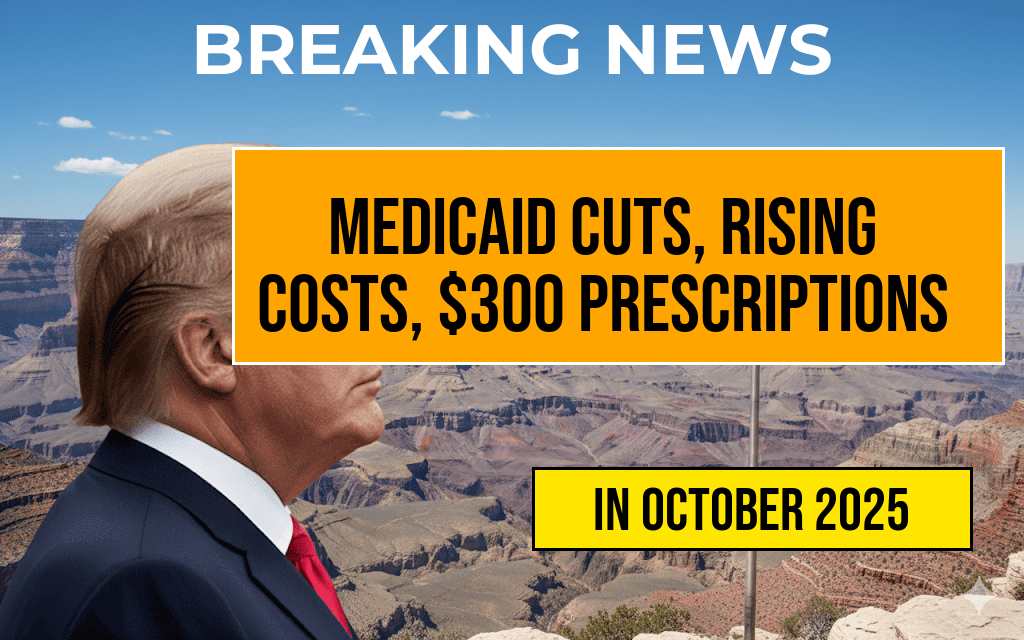Washington Post Reports $1 Trillion Medicaid Cuts and Rising Costs for a $300 Prescription
Amid ongoing debates over healthcare funding, a recent investigation by The Washington Post reveals looming threats to Medicaid, the nation’s largest health insurance program for low-income Americans. The report indicates potential $1 trillion in Medicaid cuts over the next decade, jeopardizing access to essential services for millions. At the same time, Americans are facing escalating costs for prescription medications, exemplified by a $300 drug that has become increasingly difficult for many to afford. These developments highlight the growing tension between fiscal constraints and the need for affordable healthcare, raising concerns about future coverage and treatment options for vulnerable populations.
Massive Medicaid Reductions on the Horizon
The Washington Post’s analysis suggests that federal and state policymakers are contemplating significant reductions in Medicaid funding, driven by legislative proposals aiming to curb government expenditures. A combination of policy shifts, including tighter eligibility criteria, reduction of federal matching funds, and potential drug reimbursement adjustments, could cumulatively cut nearly $1 trillion from Medicaid’s projected expenditures over the next ten years.
| Year | Projected Spending | Proposed Cuts |
|---|---|---|
| 2024 | $650 billion | – |
| 2025 | $670 billion | $20 billion |
| 2026 | $690 billion | $40 billion |
| 2027 | $710 billion | $60 billion |
| 2028 | $730 billion | $80 billion |
| 2029–2034 | Approx. $3.5 trillion total | Approx. $500 billion total |
Experts warn that these cuts could lead to reduced coverage for preventive care, mental health services, and chronic disease management, disproportionately impacting low-income and elderly populations. The Congressional Budget Office (CBO) projects that such reductions might increase uncompensated care costs, strain emergency services, and ultimately result in higher long-term healthcare expenses.
Escalating Costs for Prescription Drugs
Simultaneously, the report underscores a troubling trend: the soaring prices of prescription medications. A case in point is a widely used drug priced at approximately $300 per prescription, a figure that has surged over recent years. Patients relying on this medication now face difficult choices—either stretching limited budgets or forgoing necessary treatment altogether.
Pharmaceutical companies argue that high drug prices reflect the costs of research and development, but critics contend that some pricing practices lack transparency and exploit market monopolies. The National Institute for Health Care Management Foundation reports that drug costs in the U.S. are nearly three times higher than in other developed nations, contributing to financial barriers for many Americans.
Impacts on Patients and the Healthcare System
For Medicaid beneficiaries, these trends threaten to erode access to essential services, especially as eligibility criteria tighten and benefits shrink. Elderly patients and those with chronic illnesses could find themselves without coverage for vital medications or routine care. This could lead to worsened health outcomes, increased hospitalizations, and higher overall healthcare costs in the long run.
Meanwhile, rising medication prices place a heavy burden on individuals without sufficient insurance coverage. According to a 2023 report from the Kaiser Family Foundation, approximately 1 in 10 Americans report skipping doses or delaying prescriptions due to cost concerns. The combination of Medicaid cuts and high drug prices creates a dual challenge for policymakers seeking to balance fiscal responsibility with the moral obligation to provide accessible healthcare.
Policy Responses and Public Discourse
Lawmakers are divided over how to address these issues. Some advocate for greater regulation of pharmaceutical prices and expanded subsidies for low-income populations, while others emphasize deficit reduction and budgetary constraints. Recent legislative proposals include measures to increase transparency around drug pricing, expand Medicaid eligibility in certain states, and implement cap limits on out-of-pocket expenses.
Public opinion polls indicate that healthcare affordability remains a top concern among voters, with many Americans wary of potential service reductions. Advocacy groups continue to push for protections that prevent vulnerable populations from bearing the brunt of fiscal austerity measures, warning that the long-term societal costs of restricted access could outweigh immediate budget savings.
Additional Resources
- Wikipedia: Medicaid
- Forbes: Why Drug Prices in the U.S. Are So High
- Kaiser Family Foundation: Medicaid and Prescription Drug Spending
Frequently Asked Questions
What is the main focus of the Washington Post article?
The article discusses $1 trillion Medicaid cuts and the rising costs associated with a $300 prescription, highlighting the financial challenges facing healthcare programs and patients.
How are the proposed Medicaid cuts expected to impact beneficiaries?
The Medicaid cuts are anticipated to reduce coverage and benefits for many beneficiaries, potentially leading to decreased access to essential healthcare services.
What factors are contributing to the increasing costs of prescriptions, such as the $300 medication mentioned?
The rising costs of prescriptions are driven by factors like high drug prices, research and development expenses, and limited competition in the pharmaceutical market.
What are the potential policy implications of these Medicaid cuts and rising prescription costs?
The article suggests that these developments could lead to policy debates over healthcare funding, affordability, and the need for reforms to ensure access to affordable medications and coverage.
How might patients and healthcare providers respond to these financial pressures?
Patients and providers may seek alternative treatment options, advocate for policy changes, or look for assistance programs to manage costly prescriptions and navigate the impacts of budget cuts.

Leave a Reply